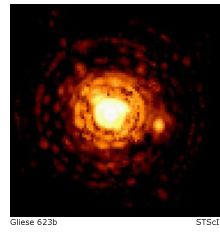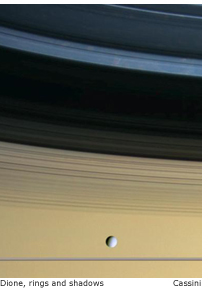
|
Syllabus Printable syllabus - pdf Text Horizons, 9th edition, Michael A. Seeds GRADES Your grade will be based on your performance in the 3 in-class tests (T), 4 homework assignments (H), and the final exam (F). The scores will be weighted as follows: There are five homework sets to be turned in; we will compute your average homework grade on the best four out of five of these. There is one additional grading rule/opportunity: if your final exam score exceeds your lowest test score, we will count the final exam score also in place of the lowest test score. This is designed to give you the opportunity to make up for a poor performance on one of the tests. Because we are granting you this luxury, there will be no makeups given for missed tests. If you are taking this course on a pass/fail basis, University rules give the passing grade as equivalent to a D or higher. CLASS POLICIES Homework assignments will be handed out for return in not less than 1 week. Each assignment will have a due date. Late assignments will not be accepted for grading unless we have been given and have accepted your reasons for requesting an extension. Such a request must be given prior to the due date of the homework. The final examination will be comprehensive. It will be held on the date scheduled by the University: Friday, May 12, 9AM-12 noon (we probably will make the final exam shorter than 3 hours; details to be given later in the semester). There will be no make-up final exam scheduled. Some math at the level of high school algebra will be required for the homework sets. We will expect you to practice and be comfortable with such things as scientific notation, and simple manipulation of basic astronomical formulate. Are you rusty in such math skills? We will be happy to help you! The math level should in no way challenge anyone who has met the UT math requirement. There will be no math called for on the examinations. All work handed in for grading must be your own work. If you discuss the homework assignment with a friend, we urge you to use your own words and imagination in writing your answers. Homework sets that are nearly identical will result in grades of zeros for all involved. If you are puzzled by a question, do not copy out a friend's answer, but come to the help sessions and to our offices, and discuss the problem. Don't be shy! We are here to help! Copying during exams is a heinous crime for which the punishment will be a zero for that exam at minimum to an F for the course at maximum. We shall not hesitate to report such cases to the Dean of Students. The University's deadlines and rules regarding "dropping" the course will be strictly enforced.  To encourage your understanding of the course material, we de-emphasize standard office
hours in favor of regularly scheduled help sessions. Office hours are by appointment for special
needs, but to work on homeworks, tests, etc. we will conduct two help/review sessions each
week (attendance is not mandatory). I hope to schedule one of these on Wednesday evenings
at 7 PM, and the other one at a late afternoon time of mutual convenience.
To encourage your understanding of the course material, we de-emphasize standard office
hours in favor of regularly scheduled help sessions. Office hours are by appointment for special
needs, but to work on homeworks, tests, etc. we will conduct two help/review sessions each
week (attendance is not mandatory). I hope to schedule one of these on Wednesday evenings
at 7 PM, and the other one at a late afternoon time of mutual convenience.
We will announce in the previous class period the "themes" of each extra session (questions and problems to be addressed, test reviews to be conducted), but of course we will welcome any discussion of topics that are of concern to you. I plan on personally conducting at least one of the weekly sessions. These sessions have proven in the past to be extremely helpful to students! If your schedule does not permit attending any of them, please think about switching to another section of Astronomy 301. I won't want to set up special help sessions for one or two people when all others in the class find time to get to the regularly scheduled ones. Second, come to the help sessions prepared to participate! I refuse to use those times to lecture at you (that would be unhelpful to all of us). MISCELLANEOUS COMMENTS Astronomy is an observational science. In order to gather observations for our research, we must visit the University's McDonald Observatory in West Texas and other astronomical institutions around the world. Infrequently, I also attend meetings of editors of astronomy journals. However, this travel should not occur at the expense of your education. On the occasions when I must be absent from class, another faculty member will conduct the lectures. All class periods will be held! I will attempt to maneuver one of two of the exam dates to coincide with travel dates, in order to minimize the use of substitute lecturers this semester. We want you to do well in this course! To that end, a couple of points should be emphasized. First, we encourage you to ask questions in class. This is of course not always easy in a large class (and I often partially darken the lecture hall to project astronomical images, etc. If I don't see your hand raised, feel free to speak up! Second, remember that the only stupid question is the unasked one. Your progress through this class will be greatly enhanced through interactions with us. Take advantage of the regular review sessions. My home telephone number is listed on the first syllabus page. Use it at any reasonable hour of the day or evening (<11 PM or so). See also my electronic mail address. However, I GREATLY prefer phone calls to emails, because I receive on average about 50 emails/day on various (legitimate!) matters, and email exhaustion simply sets in on some days. I would far rather talk to you in person or over the phone than go back and forth with emails.  I very much like the textbook selected for this course, in part because it begins with, and
spends much time on, the subject of "stellar" astronomy. This research area is of keen interest
to me. However, there are a large number of other pretty good introductory textbooks on
the market today. If you wish to read one of these other texts for a fresh idea about a topic,
please see us and we shall be happy to lend you a text (there are a lot also at the URL and
PMA libraries).
I very much like the textbook selected for this course, in part because it begins with, and
spends much time on, the subject of "stellar" astronomy. This research area is of keen interest
to me. However, there are a large number of other pretty good introductory textbooks on
the market today. If you wish to read one of these other texts for a fresh idea about a topic,
please see us and we shall be happy to lend you a text (there are a lot also at the URL and
PMA libraries).
You may be interested to visit our Student Observatory on the roof of Painter Hall. This houses a 9-inch refracting telescope. The public nights are Friday and Saturday - clear nights only! This is a simple telescope to use and students (you!) can be checked out to observe independently with it. For further information, please visit the links at http://outreach.as.utexas.edu/index.html. COURSE TOPICS This course will provide a general introduction to contemporary astronomy. Unfortunately it is impossible in one semester to do justice to all potentially interesting topics. After beginning with about three weeks of discussion of some "natural phenomena" and some of the needed ideas from physics, we will spend about half of the semester studying the broad area of stellar astronomy. During this part of the course we will also introduce many of the areas of physics necessary to appreciate the origin and evolution of stars. What topics after stars? Unfortunately, it simply is not possible to do justice to both the subject of solar system astronomy (the Sun and the planets) and that of the larger universe (our galaxy, other galaxies, and cosmology). So, how about a sporting proposition here? As we near the end of our work on stars, I will call for a vote! Would you like to study galaxies and the universe, or would you like to study our Solar System? I'll make the decision if the vote is closely split, but will go with your wishes if a strong preference is indicated. Below I have blocked out the semester, naming the text chapters relevant to each topic. In each class, discussion will be focused on the more difficult material. However, you are responsible for all of the material given in the text, as well as that given in class. Please read the identified chapters of the text before our class discussion.
|
||||||||||||||||||||||||||||||||||||||||||||||||||||||||||||||||||||||||||||||||||||||||||||||||||||||||||||||||||||||
24 January 2006
Astronomy Program · The University of Texas at Austin · Austin, Texas 78712
prospective student inquiries: studentinfo@astro.as.utexas.edu
site comments: www@www.as.utexas.edu
Astronomy Program · The University of Texas at Austin · Austin, Texas 78712
prospective student inquiries: studentinfo@astro.as.utexas.edu
site comments: www@www.as.utexas.edu